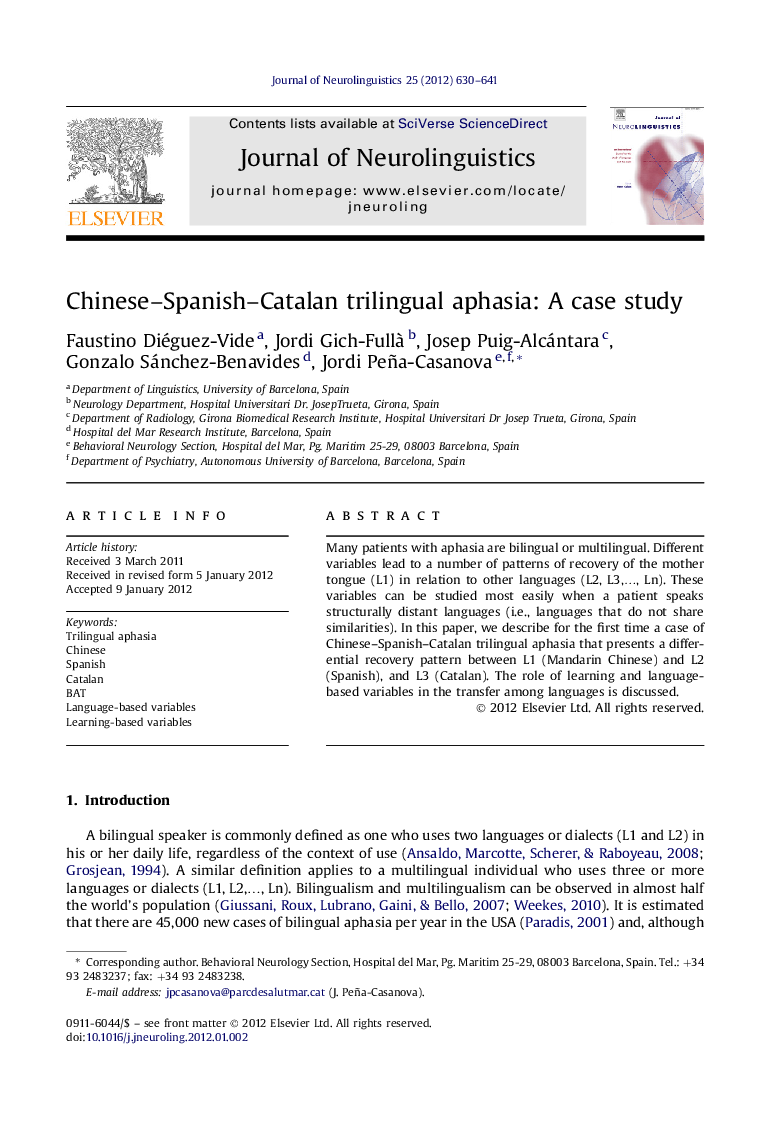| Article ID | Journal | Published Year | Pages | File Type |
|---|---|---|---|---|
| 911848 | Journal of Neurolinguistics | 2012 | 12 Pages |
Abstract
Many patients with aphasia are bilingual or multilingual. Different variables lead to a number of patterns of recovery of the mother tongue (L1) in relation to other languages (L2, L3,…, Ln). These variables can be studied most easily when a patient speaks structurally distant languages (i.e., languages that do not share similarities). In this paper, we describe for the first time a case of Chinese–Spanish–Catalan trilingual aphasia that presents a differential recovery pattern between L1 (Mandarin Chinese) and L2 (Spanish), and L3 (Catalan). The role of learning and language-based variables in the transfer among languages is discussed.
Related Topics
Life Sciences
Neuroscience
Cognitive Neuroscience
Authors
Faustino Diéguez-Vide, Jordi Gich-Fullà, Josep Puig-Alcántara, Gonzalo Sánchez-Benavides, Jordi Peña-Casanova,
